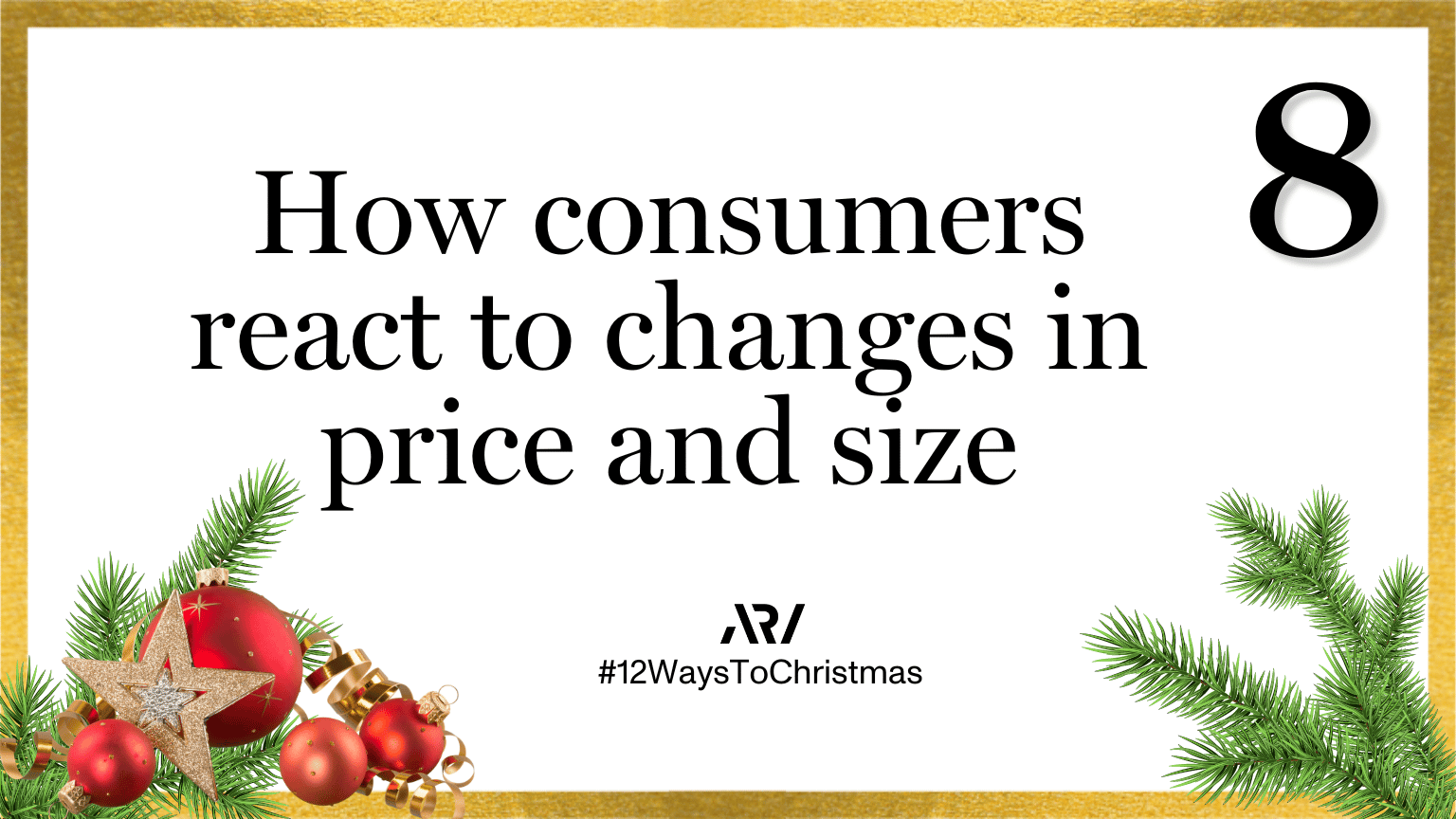One of the major challenges facing businesses and consumers as we head into the Christmas season is inflation and the rising cost of living.
Inflation is a fact of life in retail, and marketers will often find it necessary to increase the unit price of a product. When doing this it is common to either increase the retail price or reduce the package size.
“As consumers are very sensitive to changes in price, this has led to a growing trend in increasing unit price by stealth through reducing package sizes while keeping price constant, commonly referred to as shrinkflation.
This research, conducted by QUT in collaboration with the ARA’s Consumer Research Committee, seeks to address this by exploring consumer reactions to simultaneous changes in price and size across several contexts. This research also explores how value signals, such as the availability of unit prices (price per weight), also effect reactions to these changes.
While consumers are less sensitive to changes in size, this trend has received widespread attention through the media and consumer advocacy groups, which has brought negative attention to a range of brands that have engaged in this practice.
However, a more nuanced approach is to change both the retail price and the product size simultaneously and in the same direction, but at disproportional rates.
For example, increasing the size of a product but increasing the price in a greater magnitude, effectively raising the unit price. An example of this is the commercially successful reduction in the American Breyer’s “half-gallon” ice cream average package size by 10%, which was accompanied by a reduction in the product’s price by 7%. Despite effectively increasing the unit price by 3%, consumer reactions to this change were largely positive.
However, these simultaneous changes in price and package size are not common in the marketplace, and under researched in the literature.

Method and sample
Data was drawn from five studies, across both online surveys (US based consumer panel participants, n=291, n=174, n=169 and n=303) and in person field research (conducted in partnership with an Australian supermarket chain, n=210).
Across these studies, information was given to participations regarding a product’s size and price.
The product’s size and price were then manipulated up down and the participants made a choice whether or not to buy the product at the new price and size. The way this information was presented was manipulated experimentally: for example, some shoppers were reminded of the previous price and size when making their decision, some were given detailed unit price information (price per weight, etc.), others had to make a decision with no more information than their own recollections.
Additional demographic information, including numerical ability, was also collected. In the last study, some participants were also instructed to undertake a cognitive load task (listing features of lawn mowers) to make it more difficult to remember changes in unit price.
Key findings
- Unit price increases implemented through simultaneous changes in price and size result in greater sales and product selection then when only package downsizing or price increases are implemented.
- Raising unit price through decreasing size and price disproportionately (size falling further than price) had a greater positive impact on sales and product selection than increasing size and price disproportionately (price rising faster than size).
- This relationship is the result of changes to perceived value, and so the positive impact of changing unit price in this way is more impactful for price-conscious consumers.
- However, when unit price is present and customers are mathematically competent, there is no difference between increasing or decreasing price-size simultaneously, with customers showing equal preference for both.
- When customers are less mathematically competent however, or faced with mentally taxing situations, they return to favouring simultaneous decreases in price and size even when unit price is present.
Recommendations
Consumers are less responsive to simultaneous changes in price and size than to either size decreases (package downsizing) and retail price increases.
“In particular, the average customer reacts most positively to these unit price increases when size and price are reduced, echoing past research that shows customers are more sensitive to price changes than size changes.
This suggesting that when unit price increases are necessary this can be best accomplished through reducing both price and size in the same direction. For example, reducing price but also reducing package size by a greater degree so that the overall unit price increases.
However, in marketplaces such as the EU, UK, some US states and Australia, where it is mandatory to display unit prices, it is more likely for customers to perceive the overall increase in unit price, and this can diminish the positive impact of this price tactic. Overall, however, this is still a more advantageous method of raising unit prices as even when unit price is visible customers prefer this simultaneous price-size change to alternatives.
This can be further supported by presenting consumers with cognitively demanding contexts, such as large assortments of product sizes and external noise such as in-store promotions and special offers. The presence of these distractions makes it more likely for customers to rely on assumptions of value, rather than numerically calculating value, and thus more likely to positively react to simultaneous reductions in price and size.
Researcher – Dr Di Wang, QUT




















